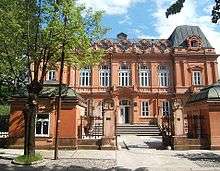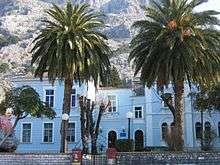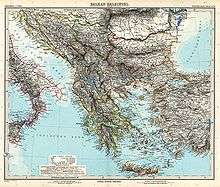University of Montenegro
|
Univerzitet Crne Gore | |
| Type | Public |
|---|---|
| Established | April 29, 1974 |
| Rector | Radmila Vojvodić |
Academic staff | 850 |
Administrative staff | 430 |
| Students | 21,595 |
| Location | Podgorica, Montenegro |
| Campus | Urban |
| Colors |
Blue and white |
| Website |
ucg |
The University of Montenegro (Montenegrin: Univerzitet Crne Gore, Универзитет Црнe Горe) is a national public research university of Montenegro, located in the country's capital Podgorica. It was founded in 1974 and it is currently organized in 19 faculties.


History
The University of Montenegro was founded on 29 April 1974. In that year the following organisations signed the Agreement on Association into the University of Titograd:
- three faculties: Faculty of Economics, of Engineering and the Faculty of Law from Titograd,
- two colleges: Teaching College from Nikšić and Maritime Studies College from Kotor,
- three independent scientific institutes: for History, for Agriculture and for Biological and Medical Research from Titograd.
A year after it was founded, the institution changed its name to Veljko Vlahović University in honour of the communist activist and World War II participant from Montenegro who died that year. In 1992, the university was given its current name - University of Montenegro.
Organization
The seat of the university is in Podgorica, the capital city of Montenegro, with a population of around 190,000. Most faculties of the University of Montenegro are located in Podgorica, while some faculties were opened in Nikšić, Cetinje and Kotor.
The university comprises faculties, institutes and colleges, as well as logistic centers. The Managing Board governs the university and the Rector manages it. The supreme academic body is the University Senate. Deans are heads of faculties and directors are heads of institutes. At faculties i.e. at institutes, the highest academic bodies are councils for teaching-scientific issues, i.e. for teaching-artistic issues. The highest student body is the Student Parliament. Representatives of students are elected in all bodies of the university and of the faculties.
Faculties
The university comprises following 19 faculties in 4 cities:
Within the faculties, there are departments and study groups.
The university includes two scientific research institutes:
- Institute for History
- Institute of Marine Biology
There are Center of Information Technology, Human Rights Centre, Centre for International Studies, Centre for Quality at the university.
See also

- List of colleges and universities
- Podgorica
External links
| Wikimedia Commons has media related to University of Montenegro. |
Coordinates: 42°26′36″N 19°14′38″E / 42.44333°N 19.24389°E
